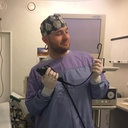Hydronephrosis in the course of ureteropelvic junction obstruction: An underestimated problem? Current opinions on the pathogenesis, diagnosis and treatment.
Słowa kluczowe
Abstrakcyjny
Ureteropelvic junction obstruction (UPJO) causes a reduction in the urine flow from the renal pelvis into the ureter. Untreated UPJO may cause hydronephrosis, chronic infection or urolithiasis and will often result in progressive deterioration of renal function. Most cases of UPJO are congenital; however, the disease can be clinically silent until adulthood. Other causes, both intrinsic and extrinsic, are acquired and include urolithiasis, post-operative/inflammatory/ischemic stricture, fibroepithelial polyps, adhesions and malignancy. In the past, the most frequent symptom of UPJO in neonates and infants was a palpable flank mass. Nowadays, thanks to the widespread use of maternal and prenatal ultrasound examinations, asymptomatic hydronephrosis is diagnosed very early. In adults and older children symptoms may include intermittent abdominal or flank pain, nausea, vomiting and hematuria. In addition to high specificity and sensitivity in detecting UPJO, modern technologically advanced equipment such as ultrasound, magnetic resonance imaging and computed tomography provides a lot of information about the function of the affected kidney and the anatomy of the surrounding tissues. Treatment options for UPJO include a wide spectrum of approaches, from active surveillance or minimally invasive endourologic techniques to open, laparoscopic or robotic pyeloplasty. The main goal of therapy is to relieve symptoms and maintain or improve renal function, but it is difficult to define treatment success after UPJO therapy.


